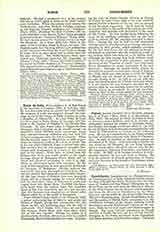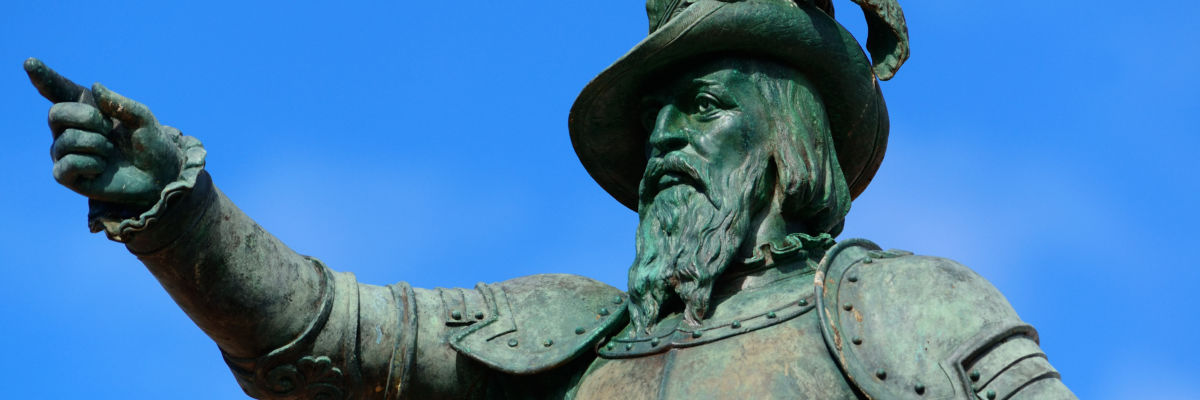

Ponce de Leon, JUAN, explorer, b. at San Servas in the province of Campos, 1460; d. in Cuba, 1521. He was descended from an ancient and noble family; the surname of Lein was acquired through the marriage of one of the Ponces to Dona Aldonza de Leon, a daughter of Alfonso IX. As a lad Ponce de Leon served as page to Pedro Nunez de Guzman, later the tutor of the brother of Charles V, the Infante Don Fernando. In 1493, Ponce sailed to Hispaniola (San Domingo) with Columbus on his second voyage, an expedition which included many aristocratic young men, and adventurous noblemen who had been left without occupation after the fall of Granada. When Nicolas Ovando came to Hispaniola in 1502 as governor, he found the natives in a state of revolt, and in the war which followed, Ponce rendered such valuable services that he was appointed Ovando’s lieu-tenant with headquarters in a town in the eastern part of the island. While here, he heard from the Indians that there was much wealth in the neighboring Island of Boriquien (Porto Rico), and he asked and obtained permission to visit it in 1508, where he discovered many rich treasures; for his work in this expedition he was appointed Adelantado or Governor of Boriquien. Having reduced the natives, he was soon afterward removed from office, but not until he had amassed a considerable fortune. At this time stories of Eastern Asia were prevalent which told of a famous spring the waters of which had the marvellous virtue of restoring to youth and vigour those who drank them. Probably the Spaniards heard from the Indians tales that reminded them of this Fons Juventutis, and they got the idea that this fountain was situated on an island called Bimini which lay to the north of Hispaniola.
Ponce obtained from Charles V, February 23, 1512, a patent authorizing him to discover and people the Island of Bimini, giving him jurisdiction over the island for life, and bestowing upon him the title of Adelantado. On March 3, 1513, Ponce set out from San German (Porto Rico) with three ships, fitted out at his own expense. Setting his course in a northwesterly direction, eleven days later he reached Guanahani, where Columbus first saw land. Continuing his way, on Easter Sunday (Pascua de Flores), March 27, he came within sight of the coast which he named Florida in honor of the day and on account of the luxuriant vegetation. On April 2 he landed at a spot a little to the north of the present site of St. Augustine and formally took possession in the name of the Crown. He now turned back, following the coast to its southern extremity and up the west coast to latitude 27° 30′, and then returned to Porto Rico. During this trip he had several encounters with the natives, who showed great courage and determination in their attacks, which probably accounts for the fact that Ponce did not attempt to found a settlement or penetrate into the interior in search of the treasure which was believed to be hidden there. Although his first voyage had been without result as far as the acquisition of gold and slaves, and the discovery of the “fountain of youth” were concerned, Ponce determined to secure possession of his new discovery. Through his friend, Pedro Nunez de Guzman, he secured a second grant dated September 27, 1514, which gave him power to settle the Island of Bimini and the Island of Florida, for such he thought Florida to be. In 1521 he set out with two ships and landing upon the Florida coast, just where, it is not known, he was furiously attacked by the natives while he was building houses for his settlers. Finally driven to reembark, he set sail for Cuba, where he died of the wound which he had received.
VENTURA FUENTES


